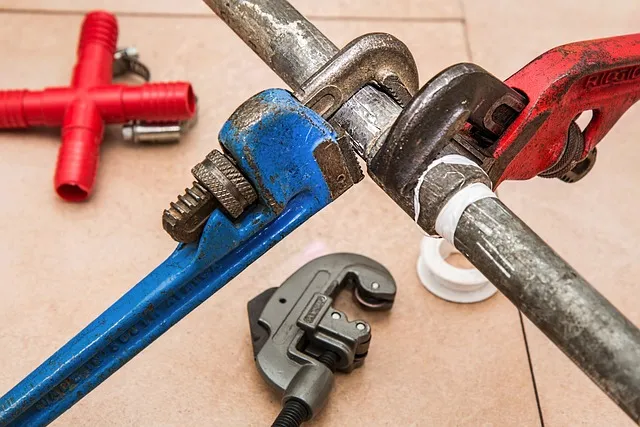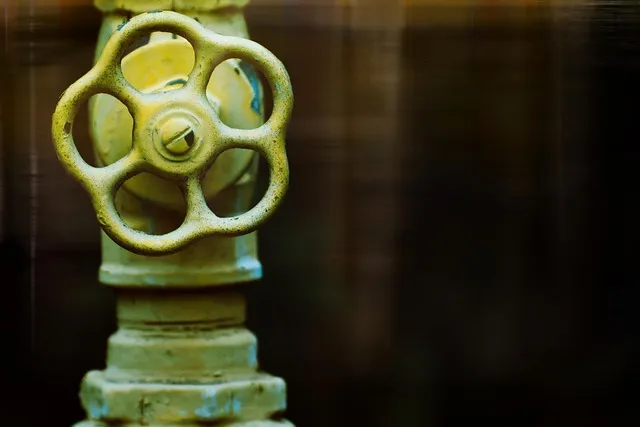For effective emergency pipe repairs, essential tools include adjustable pliers, utility knives, pipe compound, O-rings, gaskets, and duct tape. To temporarily patch a burst or leaking pipe, shut off the main water valve, gather a bucket, cloth, duct tape, and plastic sheeting, clean the area, cut a piece of cloth or sheeting, place it over the leak, and secure with duct tape. Regular maintenance, including inspections and insulation, is crucial for preventing future damage. For complex issues like severe leaks or persistent clogs, seek professional pipe repair assistance to prevent costly repairs and health risks.
“Emergency pipe repair is a crucial aspect of home maintenance, addressing potential water damage and ensuring a steady supply. This comprehensive guide delves into the heart of common pipe problems, their causes, and urgent repair needs. We equip you with the knowledge to assess situations, providing a step-by-step approach for temporary patching. For long-term peace of mind, discover preventative measures and when professional plumbers are your best bet. Mastering these skills can save time, money, and untold headaches in the event of unexpected pipe repairs.”
Understanding Common Pipe Problems and Their Causes

Pipeline issues are a common household problem, often arising from various factors. Understanding these problems and their causes is crucial for effective pipe repair. One of the primary culprits is corrosion, which can lead to rust buildup and ultimately, pipe degradation. This process is accelerated by poor drainage, causing water to stagnate and erode pipes over time. Another frequent issue is tree root intrusion; roots from nearby plants can penetrate pipes, leading to blockages or even fracturing them. Additionally, aging pipes, especially in older homes, are prone to leaks due to material fatigue or inadequate sealing. Identifying these problems early on is essential for efficient and cost-effective pipe repair.
Assessing the Urgency of Emergency Repairs

When faced with a potential plumbing emergency, assessing the urgency of pipe repair is crucial. The first step is to identify if there’s active water flow through the damaged pipe. If water is gushing out or there’s a continuous drip, immediate action is required as these could lead to significant water damage and higher repair costs.
Consider the location of the leak too; a leak in your basement may cause minimal disruption, but one in your kitchen or bathroom could pose a serious threat. In cases of severe flooding or major pipe bursts, it’s best to evacuate the area immediately and contact emergency services or a reliable 24/7 pipe repair company for swift attention. Prioritizing quick action can help mitigate potential hazards and minimize damage to your property.
Tools and Equipment Required for Quick Fix

When it comes to emergency pipe repairs, having the right tools and equipment is paramount. For a quick fix, you’ll need a few essential items to get the job done efficiently. Start with a good set of pliers—both adjustable and needle-nose—which are indispensable for gripping and bending metal. A utility knife or a saw designed for plastic pipes will allow you to cut through obstructions without causing further damage.
Additionally, consider acquiring a tube of pipe compound or sealant, specifically formulated for plumbing repairs. These compounds create a strong, water-tight seal when applied correctly. A collection of various-sized O-rings and gaskets can also be helpful, ensuring tight connections in different pipe configurations. Lastly, don’t underestimate the power of duct tape; it’s an easy, temporary fix for small leaks until you can implement a more permanent solution.
Step-by-Step Guide to Temporary Patching

When dealing with a burst or leaking pipe, time is of the essence in stopping water damage. Before professional help arrives or as a temporary solution while waiting for a repairman, follow this step-by-step guide to patching your pipe. Begin by shutting off the main water supply valve to prevent further leakage and assess the extent of the damage. Next, gather essential tools like a bucket, cloth, duct tape, and a piece of plastic sheeting. After ensuring the area is dry, clean any debris around the leak to create a clean patch site.
Cut a piece of cloth or plastic sheeting slightly larger than the leak. Place it over the opening, securing it tightly with duct tape on both sides of the pipe. This makeshift patch can stop immediate water flow and buy you time until a permanent repair is made. Lastly, monitor the area regularly to ensure the patch remains intact and no further damage occurs.
Long-Term Solutions: Preventative Measures and Maintenance

Pipe repair isn’t just about fixing immediate leaks; it’s also about implementing long-term solutions to prevent future damage. Regular maintenance and preventative measures are key to keeping pipes in good condition. Start by scheduling routine inspections, especially in older homes or buildings with outdated plumbing. These checks can identify potential issues early on, allowing for minor repairs that avert major disasters.
Consider investing in quality pipe insulation to protect against temperature extremes and freezing conditions, common causes of burst pipes. Additionally, maintaining clear drains and sewers through regular cleaning prevents clogs that could lead to costly water damage. By taking these proactive steps, you’re not just saving money on emergency pipe repair; you’re ensuring a more reliable plumbing system for years to come.
When to Call in Professional Plumbers

If you’re facing a pipe repair issue, it’s crucial to know when to seek professional help. While minor leaks or clogs can often be addressed with DIY methods, more complex problems warrant the expertise of trained plumbers. Look out for signs that indicate the need for professional intervention, such as persistent and severe water leaks, burst pipes causing significant water damage, or ongoing plumbing issues despite attempted repairs.
Professional plumbers are equipped to handle a wide range of emergency pipe repair situations, ensuring swift and effective solutions. Their training enables them to diagnose problems accurately, whether it’s an old, corroded pipe, faulty fittings, or root intrusions causing pipe damage. Timely professional assistance can prevent further complications, saving you from costly repairs and potential health hazards related to water damage or unsanitary conditions.
